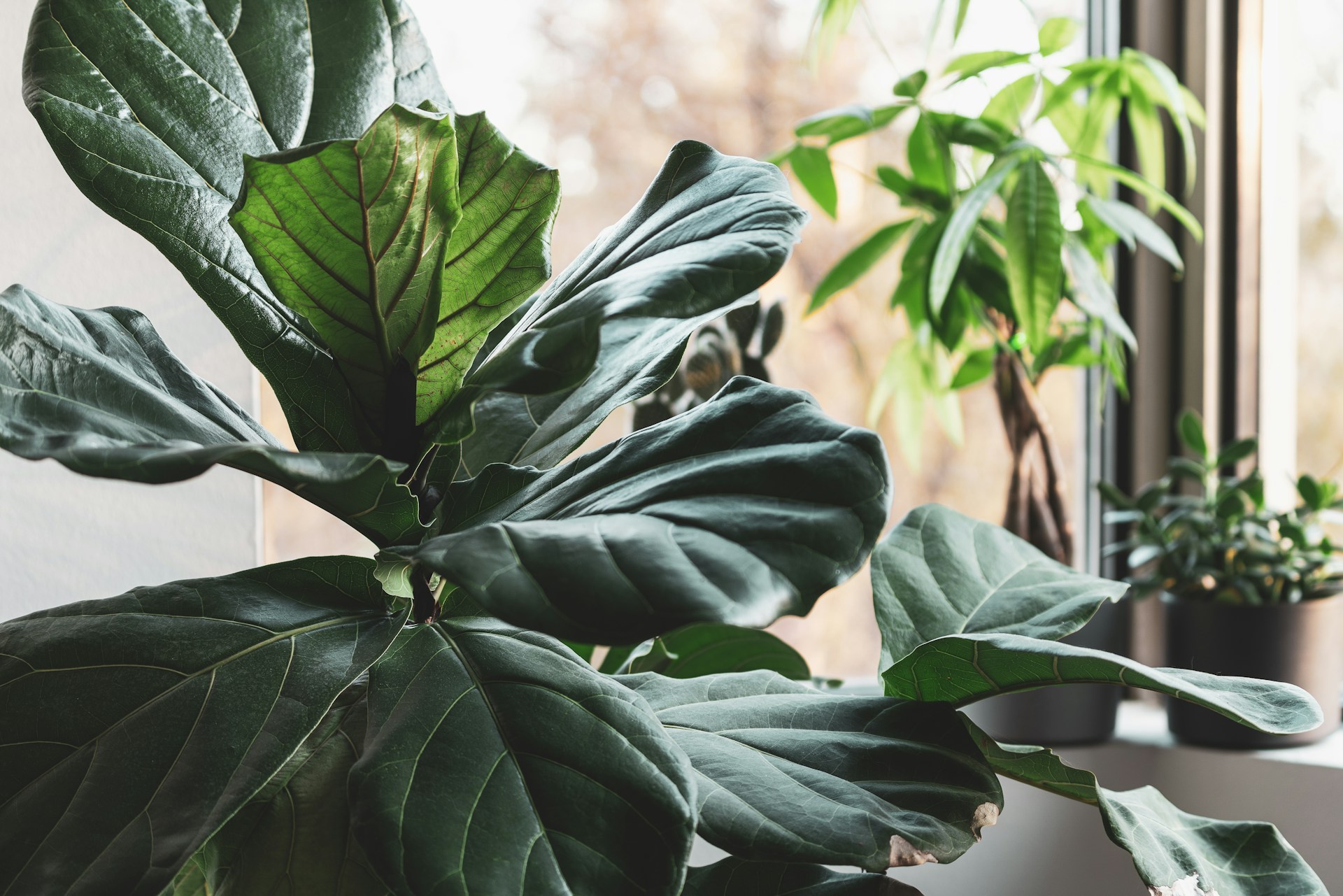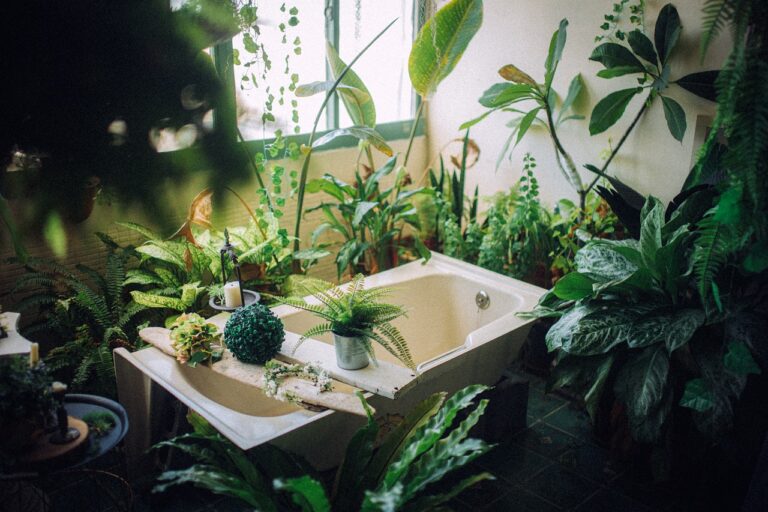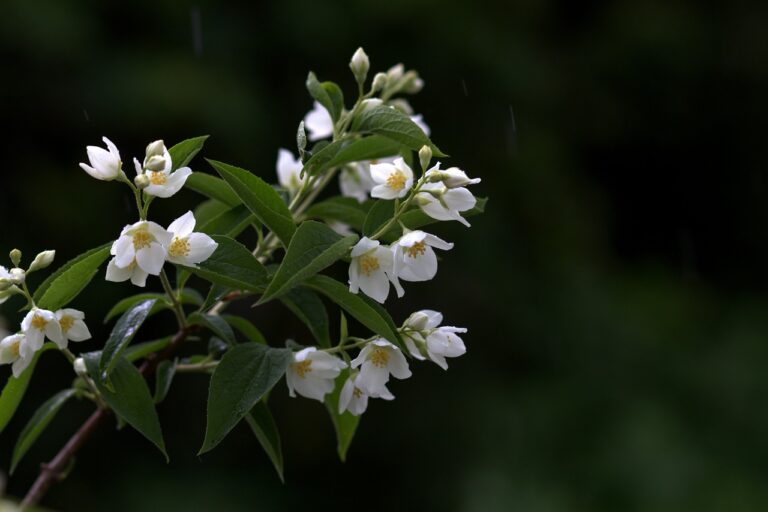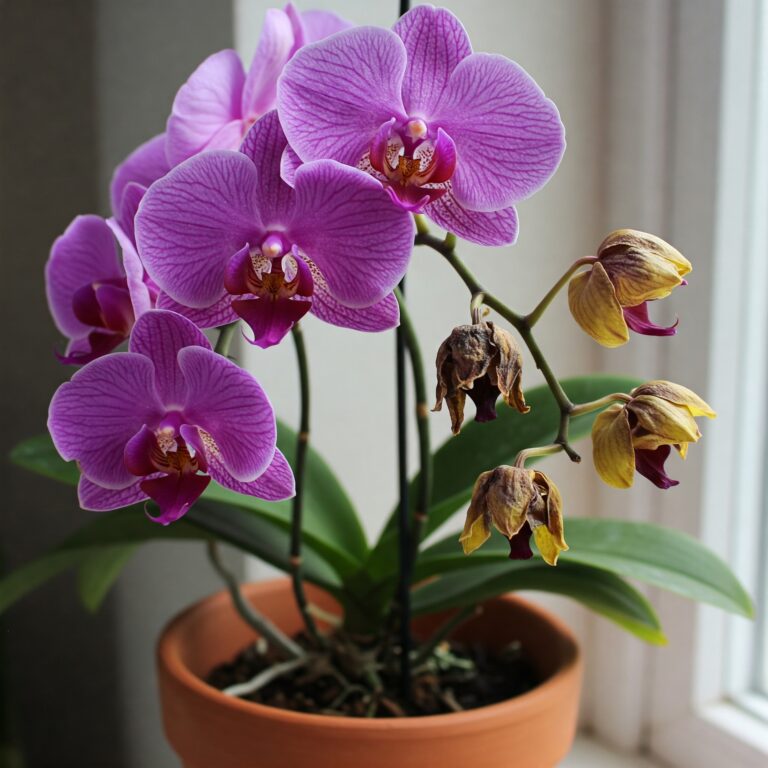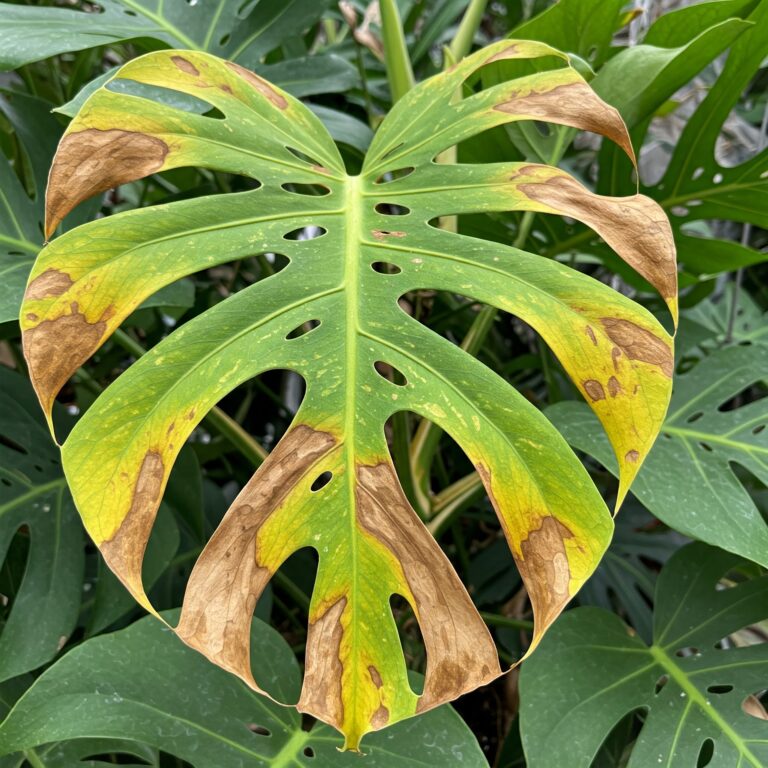If you are here, you probably have a fiddle leaf fig plant and are wondering what the best watering schedule is. Or maybe you don’t have a clue how to water a fiddle leaf fig.
The fiddle leaf fig, scientifically known as Ficus lyrata, has recently gained immense popularity as a houseplant. Its large, glossy, violin-shaped leaves make it a striking addition to any indoor space, adding a touch of elegance and greenery.
However, most gardeners have found it hard to get the correct amount of water to give the plant. And as a result, most plants end up dying due to improper watering.
So, how can you water your fiddle leaf fig? There isn’t a wrong or right way to water the plant. The amount of water you give to your plant will depend on the location, type of soil, plant size, light, and temperature in the room. Once you get this right, create a watering schedule for your fiddle leaf fig plant.
But, the correct amount of water should make the soil moist and not too wet or dry. Overwatering can lead to root rot, and underwatering can cause stunted growth.
What is the best time to water a fiddle leaf fig plant?
The best time to water a fiddle leaf fig plant is when the top inch or so of the soil feels dry when you touch it. Then, allow the soil to dry out between waterings to avoid overwatering partially.
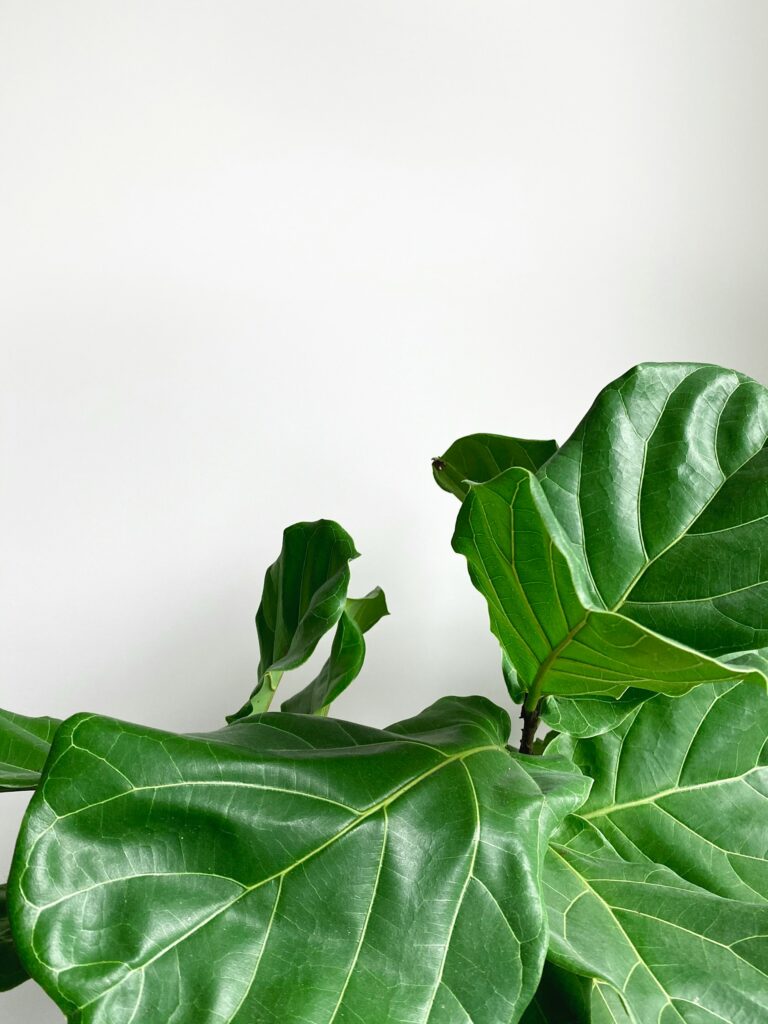
Regarding the time of day, early morning is the ideal time to water your fiddle leaf fig. This allows the plant to absorb the water and hydrate throughout the day while still having sufficient time to dry out before the cooler evening temperatures. Watering in the morning also helps prevent prolonged periods of moisture on the leaves, reducing the risk of fungal diseases.
You can also water it in the late evening; however, it’s not recommended because it can leave the plant’s roots sitting in excess moisture for an extended period, promoting the growth of fungi and bacteria. You can prevent this by watering the soil and avoiding watering the foliage.
How often to water your fiddle leaf fig.
The frequency of watering a fiddle leaf fig can vary depending on different factors, such as the size of the plant, the size of the pot, the environmental conditions, and the type of soil it’s planted in.
However, you can water a fiddle leaf fig plant every 7 to 10 days, but ensure you check the soil’s moisture level before watering.
How to check the moisture level before watering.
To check the moisture level in a fiddle leaf fig plant before watering, you can use a few different methods:
- Finger Test — Insert your finger into the soil about an inch or two deep. If the soil feels dry at that depth, it indicates it’s time to water. However, if the soil feels slightly moist, it’s best to wait longer before watering.
- Moisture Meter — You can use a moisture meter specifically designed for houseplants. Insert the meter probe into the soil at various locations around the plant’s root zone. The meter will provide a reading indicating the moisture level in the soil. Follow the instructions provided with the moisture meter for accurate readings.
- Weight of the Pot — Lift the pot or container that holds your fiddle leaf fig plant. If it feels light, it may indicate that the soil has dried out and the plant needs watering. Conversely, if the pot feels heavy, it’s a sign that the soil still retains sufficient moisture, and you can wait a little longer before watering.
- Visual Clues — Observe the plant’s foliage and overall appearance. If the leaves start to droop or look wilted, it may indicate that the plant is thirsty and requires water. However, it’s essential to consider other factors, such as exposure to direct sunlight and temperature, which can also cause leaves to droop. Combine visual clues with the other methods mentioned above to make an informed decision.
How do I know if my fiddle leaf fig needs water?
When a plant lacks water, it’s easy to notice from the leaves and how the plant behaves. That’s because, without water, the plant can’t transport food and nutrients from the roots to the stem and leaves. Lack of water causes the plant to malnourish, and as a result, you will notice signs on the leaves.
There are several signs that can indicate if your fiddle leaf fig needs water. Here are some common indicators to look out for:
Dry Soil.
Check the top layer of soil by inserting your finger about an inch or two deep. If the soil feels dry when you touch it, it’s a sign that your fiddle leaf fig may need watering. However, ensure that you’re checking the surface and assessing the moisture level throughout the root zone.
Wilting Leaves.
When a fiddle leaf fig lacks water, its leaves may droop or wilt. This is the plant’s way of conserving moisture. If the leaves appear limp or lose their firmness, it’s a sign that your plant needs water.
Crispy Leaf Edges.
Another visual clue of water deficiency is the development of crispy or brown edges on the leaves. When a fiddle leaf fig is deprived of adequate water, the edges of the leaves can become dry and brittle.
Yellowing Leaves.
While yellowing leaves can be a sign of overwatering and underwatering, if the lower leaves of your fiddle leaf fig are turning yellow and dropping, it may indicate that the plant is not receiving enough water. However, check other factors, such as the soil moisture, light conditions, and the plant’s overall health, before concluding it’s solely due to underwatering.
Leaf Drop.
If your fiddle leaf fig is experiencing significant leaf drop, it could be a response to underwatering. The plant may shed leaves to conserve water and redirect resources to the remaining foliage. However, leaf drop can also be caused by other factors, such as overwatering or environmental stress, so it’s essential to consider the overall condition of the plant.
The best way to water your fiddle leaf fig.
To water your fiddle leaf fig plant effectively, follow these steps:
- Check the Soil Moisture: Before watering, check the soil’s moisture level. Insert your finger about an inch or two deep into the soil. If it feels dry at that depth, it’s an indication that the plant needs water. However, if the soil feels slightly moist, it’s best to wait longer before watering.
- Prepare Water: Use room temperature or slightly lukewarm water for watering your fiddle leaf fig. Fill a watering can or container with water. If possible, let the water sit for a day before using it to allow any chlorine or chemicals to dissipate.
- Water Thoroughly: Water the plant until you see water draining out of the pot’s drainage holes. This ensures that water reaches the roots and promotes proper hydration. Avoid shallow watering, as it may result in inadequate moisture distribution.
- Allow Proper Drainage: Ensure that excess water can freely drain out of the pot. Discard any water that accumulates in the saucer or tray underneath the pot to prevent the plant from sitting in standing water, which can lead to root rot.
- Remove Excess Water: If you accidentally overwater your fiddle leaf fig, and water collects in the saucer or tray, carefully empty the excess water to maintain proper moisture levels.
- Monitor the Soil: After watering, monitor the soil moisture level over the next few days. Avoid watering again until the top inch or two of the soil has partially dried out. Remember, fiddle leaf figs prefer soil that is slightly dry between waterings.
Factors to consider when you water your fiddle leaf fig plant.
As you have seen above, the amount of water you can give your plant will depend on various factors. For instance, a large fiddle leaf fig requires more water than a small fig. So, if you gave the two plants the same amount of water, one would suffer.
So, it’s best to consider these factors before watering your plant. Let’s look at these factors:
Location
The location of your fiddle leaf fig can impact its watering needs. Indoor plants, for instance, generally require less water than outdoor plants due to differences in temperature, sunlight exposure, and air circulation. Indoor plants may have lower evaporation rates, requiring less frequent watering.
Type of Soil.
The type of soil your fiddle leaf fig is planted in affects water retention and drainage. Well-draining soil, such as a mixture of potting soil and perlite or sand, allows excess water to escape more easily, preventing waterlogged conditions. Soil retaining too much moisture can lead to root rot, so ensure you use well-draining soil.
Plant Size.
Larger fiddle-leaf fig plants have larger root systems that require more water to reach all the roots. As the plant grows, its water requirements may increase. On the other hand, younger or smaller plants have smaller root systems and may require less water. So, depending on the size of your plant, create a watering schedule for fiddle leaf fig that benefits the specific plant.
Light.
The amount of light your fiddle leaf fig receives affects its water requirements. Plants in brighter, sunnier locations generally require more water due to increased evaporation and faster drying out of the soil. Conversely, plants in lower light conditions may require less frequent watering as the soil takes longer to dry out.
Temperature.
Temperature plays a significant role in plant water needs. Higher temperatures increase evaporation rates and can cause the soil to dry out more quickly. In warmer weather, you may need to water your fiddle leaf fig more frequently to compensate for the increased moisture loss. Cooler temperatures reduce evaporation and may result in lower water requirements.
Pot Size.
The size of the pot relative to the plant affects watering frequency. Larger pots typically hold more soil and moisture, resulting in slower drying times. Smaller pots may dry out more quickly, requiring more frequent watering. Consider the pot size when determining the watering schedule for your fiddle leaf fig.
Humidity Levels.
Humidity levels in the environment can impact the rate of water loss from your fiddle leaf Fig. In dry, arid conditions, plants lose moisture more rapidly and may require more frequent watering. Higher humidity levels can slow down evaporation, reducing watering frequency.
Seasonal Variations.
Seasonal changes affect the watering needs of your fiddle leaf fig. During the growing season or warmer months, when plants are actively growing, they may require more water due to increased transpiration. In contrast, the plants usually stop growing during the dormant or cooler months; thus, the watering should also slow down to avoid overwatering.
